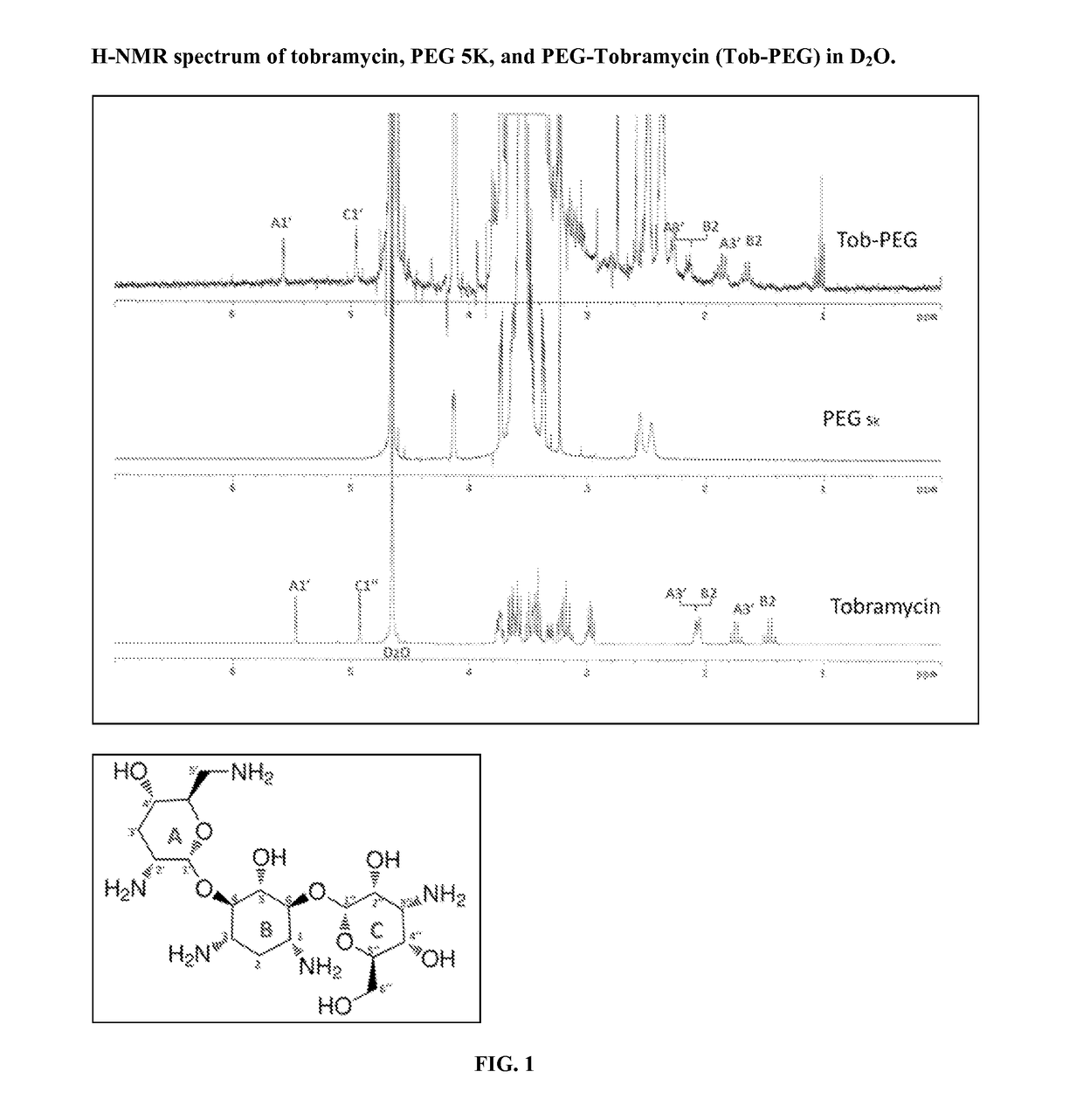Compounds for treating biofilm infection
a biofilm infection and aminoglycoside technology, applied in the field of pharmaceuticals and medicine, can solve the problems of difficult management, difficult clinical treatment of biofilm infections, and often life-threatening chronic infections, and achieve the effects of reducing or stopping the antibiotic, enhancing the antibacterial effect of aminoglycosides to treat established biofilms, and improving the efficacy
- Summary
- Abstract
- Description
- Claims
- Application Information
AI Technical Summary
Benefits of technology
Problems solved by technology
Method used
Image
Examples
example 1
Materials and Methods
[0053]Microorganism Culturing
[0054]Pseudomonas aeruginosa (P. aeruginosa) PAO1 was used throughout the study. Blood agar and Brain heart infusion (BHI) solution were used for culturing P. aeruginosa.
[0055]Prior to each experiment, P. aeruginosa was cultured on blood agar for 18 h at 37° C. A loopful of the overnight bacterial growth was inoculated into BHI medium, and incubated for 18 h in an orbital shaker (80 rpm) at 37° C. The resultant growth was harvested, washed twice in Phosphate Buffered Saline (PBS, pH 7.4) and resuspended. The concentration of P. aeruginosa was adjusted to 1×107 cells / mL by spectrophotometry and confirmed by hemocytometric counting.
[0056]Biofilm Formation
[0057]P. aeruginosa biofilm was developed as described (Bandara et al., 2010) with minor modifications. Commercially available pre-sterilized, polystyrene, flat bottom 96-well microtiter plates (BD Biosciences, California, USA) were used. At first, 100 μL of a standard cell suspension...
example 2
Polyethylene Glycol Conjugated Tobramycin has Greater Antimicrobial Activity Compared to Tobramycin in P. aeruginosa Biofilms
[0074]Synthesis of Tob-PEG
[0075]Following synthesis, we utilized nuclear magnetic resonance (NMR) spectroscopy to obtain the H-NMR spectrum (FIG. 1) (Szilagyi, 1987) and help confirm the identity of Tob-PEG. In FIG. 1-A, the multiplet at around 5.45 ppm could be assigned to the H at A1′, while multiplet of 4.9 ppm corresponds to the H at C1″; the two H at A3′ had two correlations with the signals at about 2.1 ppm and 1.75 ppm; and the two H at B2 were linked with the peaks at about 2.05 ppm and 1.45 ppm. Compared with H-NMR spectrum of tobramycin, the peaks from 1.4 ppm to 2.1 ppm were slightly shifted to left in the H-NMR spectrum of Tob-PEG, but overall, the NMR spectrum kept a similar pattern as seen with tobramycin. In the Tob-PEG it could be observed that the characteristic three peaks signals of tobramycin were retained and no similar peaks were observed...
PUM
| Property | Measurement | Unit |
|---|---|---|
| Mass | aaaaa | aaaaa |
| Mass | aaaaa | aaaaa |
| Mass | aaaaa | aaaaa |
Abstract
Description
Claims
Application Information
 Login to View More
Login to View More - R&D
- Intellectual Property
- Life Sciences
- Materials
- Tech Scout
- Unparalleled Data Quality
- Higher Quality Content
- 60% Fewer Hallucinations
Browse by: Latest US Patents, China's latest patents, Technical Efficacy Thesaurus, Application Domain, Technology Topic, Popular Technical Reports.
© 2025 PatSnap. All rights reserved.Legal|Privacy policy|Modern Slavery Act Transparency Statement|Sitemap|About US| Contact US: help@patsnap.com



